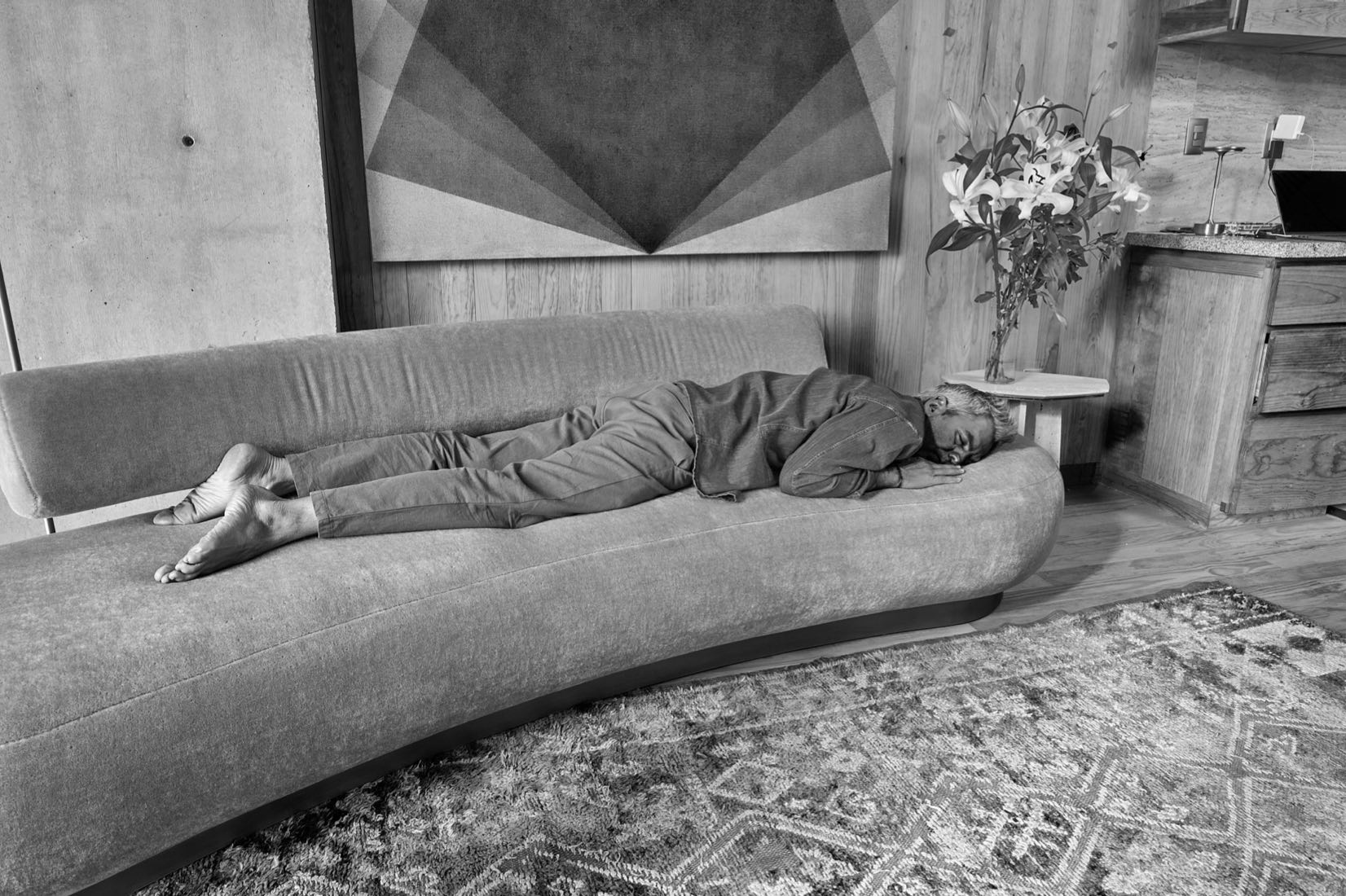
Gonzalo Lebrija
Dormir [To Sleep]
Exhibition
-> Sep 26 2023 – Dec 16 2023
Travesía Cuatro presents Dormir [To Sleep], the 6th solo exhibition by Mexican artist Gonzalo Lebrija, opening simultaneously in the gallery’s two spaces in Mexico: Mexico City and Guadalajara.
Sleep, that edge of life you don’t possess
— Jorge Luis Borges
When we sleep, memory and oblivion settle in the brain. It happens through a neuro-emotional activation that is complex and different from that which occurs during wakefulness. Sleep is a phenomenon that has always aroused fascination in human beings. It is shrouded in mystery, controversy and speculation, even though it is a natural physiological phenomenon.
In the two exhibitions that Gonzalo Lebrija (Mexico City, 1972) opens simultaneously at Travesía Cuatro CDMX and Guadalajara, the artist proposes a new series of photographs in which he appears asleep in different domestic spaces. The dynamics of these photographs reminds us of his series of images “The distance between you and me” (2008-2016), where the artist appeared running through different landscapes. He would set the camera, adjusting the timer to 20 seconds, and run away from the viewer until the device triggered the shot. The process in this new series of photographs is very similar. Again, the artist himself is the protagonist of the action: the camera shoots after 20 minutes, ensuring that he goes into a deep sleep. Throughout the history of art, humans have been depicted sleeping. Matisse, Modigliani, Picasso, etc., painted sleep almost always alluding to the sensuality of rest. It will be later, well into the twentieth century, when artists would begin to use the redoubt of sleep, of rest as a social claim and artistic experiment.
In 1972, Chris Burden presented a radical performance, “Bed Piece”, during which he lived for 22 days in an art gallery with a bed leaning against the wall as the only element, where viewers could watch him sleep. Charles Ray, in 2012, produced the sculpture titled “Sleeping woman” showing the vulnerability of sleep in public. In the performance of Cornelia Parker, starring Tilda Swinton in 1995 at the Serpentine Gallery in London, the actress sleeps in a glass urn live for 8 hours. Canadian artists Mia & Eric call for public naps in defense of rest as resistance. Young artists Navild Acosta and Fannie Sosa also called on the public to participate in collective naps at MoMA in New York recently, in May 2023, in an action they called “Black Power Naps”.
If sleep, as Jonathan Crary announces in his book 24/7, is the only stronghold that remains uncolonized in the post-capitalist era, Gonzalo
Lebrija publicly claims it through a visual manifesto in defense of rest as Resistance to the vertiginous and accelerated technological world -which does not seem to be slowing down- but rather dehumanizing our nature even more. The concept of time has always been part of his work; this time he pauses it unconditionally, in a radical act, through the public revelation of his own individual place where the sole temple of the self develops as the maximum exponent of daily escape. Sleep is revealed as the longing for an infinite world, impossible to envisage when we are awake.
Gonzalo Lebrija does not resort here, as on other occasions, to actions that are part of his idleness and personal interests to create his works. In an act of great bravery, he sleeps deeply, situating himself in a place of total vulnerability. These are powerful images where the great existential contradiction of the concepts absence-presence emerges. As the philosopher Sloterdijk states: “to remain powerfully present in absence. There is no more perfect form here on the land of present absence than sleeping.” The concepts of interior and exterior are blurred, appreciated in an abstract way, generating some confusion. The viewer, standing in front of a sleeping man, embodies once again the act of wakefulness in the face of sleep, duplicating the poetic experience of present absence. Life goes on outside while the artist sleeps and seems to tell us:
I am asleep, But I am awake because you look at me.
There you have my absence.
Lebrija chooses to sleep in black and white, as an act which is both poetic and political, in order to evade a contemporary reality that is aggressive to human perception. Time has accelerated, but our feelings and our organism ask for a moment of reflection. Perhaps we no longer want to accept any form of life imposed by a hungry and unstoppable economic and technological rhythm, nor allow ourselves to be manipulated in order to survive. Sleep is revealed as a revolutionary activity, so as to awaken from a dream providing us with the keys to a profound social transformation.
— Silvia Ortiz